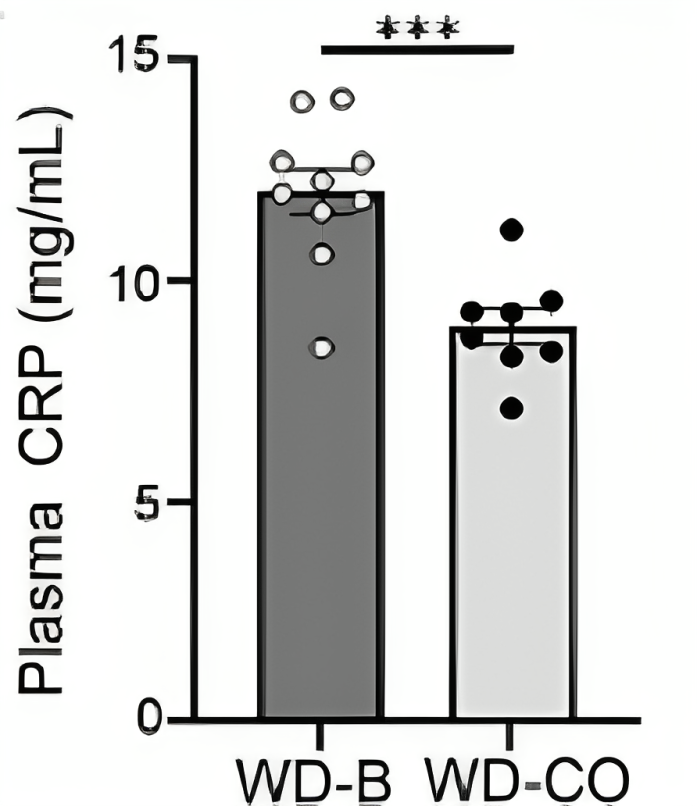Key Points:
- Artery plaque buildup is reduced by feeding atherosclerotic mice linoleic acid (LA)— an unsaturated fat — instead of saturated fat.
- LA replacement reduces high “bad” LDL cholesterol, a risk factor for heart disease and stroke.
- Whole-body systemic inflammation is reduced by LA replacement while liver inflammation appears the same.
Cardiovascular diseases (CVDs), including heart diseases and stroke account for the most deaths worldwide. Furthermore, atherosclerosis underlies most CVDs and dietary fat plays a major role in its development. It follows that the type of fat we consume could influence our lifespan by either accelerating or slowing the development of atherosclerosis.
Now, the latest study from the Mayo Clinic has helped to uncover just which fats could counter CVDs. As published in Scientific Reports, Burr and colleagues show that replacing saturated fats with LA attenuates atherosclerosis by reducing artery plaque buildup. They also show that LA replacement reduces “bad” cholesterol and systemic inflammation, which contribute to CVDs.
Switching from Saturated to Unsaturated Fat Counteracts Atherosclerosis
To test the effects of different fats, Burr and colleagues fed mice prone to atherosclerosis either a diet high in saturated fat or a diet high in LA — an omega-6 polyunsaturated fatty acid. After 12 weeks, both groups of mice had similar body weights and body composition with the no significant differences in lean or fat mass. However, the LA group showed a visible decline atherosclerotic in lesion size in their aortas.

Since high LDL cholesterol levels in the blood contribute to artery plaques, Burr and colleagues measured cholesterol levels. They found that LDL cholesterol was lower in mice fed a high-LA diet. Additionally, another type of “bad” cholesterol called VLDL cholesterol was 4-fold lower in the LA-fed mice. These findings suggest that LA replacement could reduce artery plaques by reducing bad cholesterol.

Inflammation is an underlying feature of many age-related diseases, including CVDs. In measuring inflammation, Burr and colleagues found that body-wide systemic inflammation, as measured by the clinical marker C-reactive protein (CRP) was reduced in LA-fed mice.

Overall, the findings of Burr and colleagues suggest that replacing saturated fat with LA leads to less of an increase in artery plaque buildup by reducing bad cholesterol and inflammation. Still, it is unclear how this compares to a normal diet, as the researchers fed both groups of mice a Western-style diet, consisting of high levels of fat.
Is Supplementing with Linoleic Acid a Good Idea?
LA is known to be converted to pro-inflammatory molecules and promote inflammation, which is not conducive to healthy cardiovascular aging. Burr and colleagues point out that if the atherosclerotic mice continued to eat a diet high in LA, inflammation could have eventually increased, saying,
“It is possible that [liver] inflammation was still at an early stage, during which the beneficial effects of dietary LA on plasma lipids and atherosclerosis outweigh the proinflammatory effects in the liver.”
From this it seems that LA may not be the best substitute for saturated fat, which is clearly worse. Instead, omega-3 fats may be the better choice. For example, when it comes to heart health, alpha-linolenic acid (ALA) has been shown to protect against cardiovascular aging in mice. Notably, since ALA is plant-based, it is compatible with a vegan diet like LA.